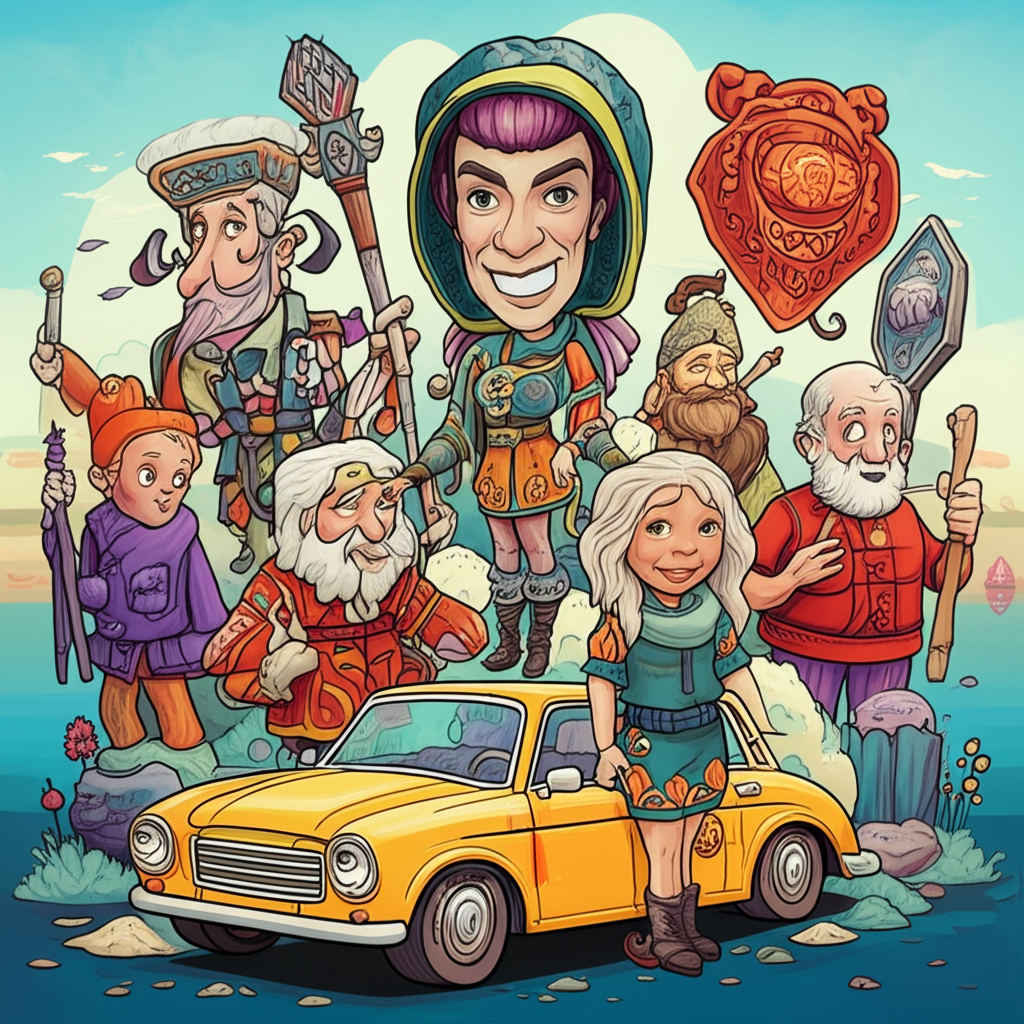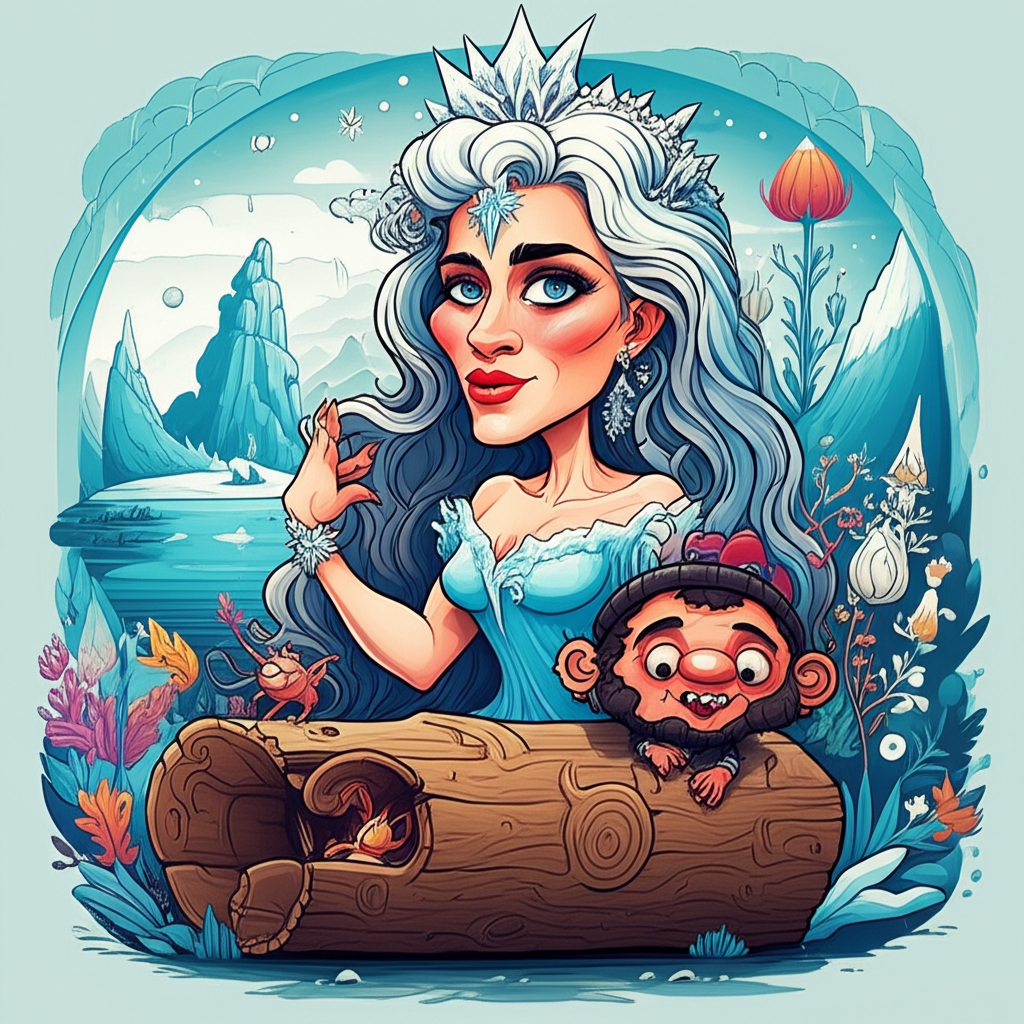
The vast tapestry of human storytelling is woven with threads of myth and legend, ancient narratives passed down through generations, offering glimpses into the worldview of those who came before us. Among these enduring tales, the Slavic folklore surrounding figures like Jarilo, Koschei, and the mythical Buyan Island offers a rich landscape for exploration. These are not accounts of historical fact or divine pronouncements, but rather the imaginative expressions of ancient peoples seeking to understand their world, their fears, and their aspirations.
Our journey begins in the lands of Eastern Europe, where the Slavic tribes, for centuries, cultivated a rich oral tradition. Their lives were deeply intertwined with the cycles of nature – the harsh winters, the life-giving spring, the fertile summer, and the abundant autumn. This intimate connection to the land, coupled with a worldview that often saw the natural world imbued with spirits and powerful forces, formed the bedrock of their mythology. For these ancient peoples, the world was not merely a physical space, but a realm alive with unseen energies, where the boundaries between the human and the supernatural were fluid and permeable. Their stories, sung around hearth fires and recounted during long winter nights, served as a way to explain the inexplicable, to impart moral lessons, and to grapple with the profound mysteries of existence.
Within this vibrant folklore, the figure of Jarilo often emerges as a personification of spring, fertility, and the sun’s returning warmth. He is frequently depicted as a handsome, golden-haired warrior, riding a white horse, wielding a scythe, and adorned with flowers. Jarilo embodies the burgeoning life that bursts forth after the dormancy of winter, a symbol of renewal and the promise of abundance. His presence signifies growth, vitality, and the triumphant return of light.
In stark contrast stands Koschei, often referred to as Koschei the Deathless or Koschei the Immortal. He is not a creature of flesh and blood as we understand it, but a being whose essence is tied to a hidden, elusive immortality. Koschei is typically portrayed as an ancient, skeletal figure, gaunt and terrifying, with eyes that gleam with malevolence. His power is not derived from brute strength, but from cunning, sorcery, and his ability to evade true death. The legend of his immortality lies in the elaborate hiding of his soul, often described as being contained within a needle, which is itself hidden within an egg, inside a duck, inside a hare, inside a chest, buried beneath an oak tree on a remote island. This intricate hiding place symbolizes the elusive nature of true mortality and the lengths to which one might go to escape it. Koschei represents the forces that oppose life and vitality – decay, death, and the chilling grip of winter.
And then there is Buyan Island. This is not a place found on any map; it is a mythical isle, a realm of the supernatural, often situated in the heart of the ocean or in the distant East. Buyan is a land of potent magic, where mystical springs flow and where the boundaries of reality blur. It is a place of both wonder and peril, a destination often sought by heroes on their quests, but rarely reached without immense trial. Buyan Island serves as a symbolic locus of power, a hidden sanctuary, and a place where the ultimate truths of existence might be found, or where ultimate dangers lie in wait. It is the liminal space where the mortal world meets the realm of the gods and the mythical beings.
The narrative often unfolds as a grand struggle between the forces represented by Jarilo and Koschei, with heroes venturing to Buyan Island in pursuit of a cure, a treasure, or to defeat the ancient evil. Imagine a tale where the land has fallen under a chilling curse, perhaps brought about by Koschei’s malevolence. The vibrant green of spring has faded, the crops refuse to grow, and a perpetual frost grips the land. The people cry out for salvation, and a brave hero, perhaps one who has witnessed the fleeting beauty of Jarilo’s brief reign, embarks on a perilous journey.
Their quest leads them across treacherous seas, guided by ancient riddles and the whispers of the wind. They must brave storms, outwit monstrous guardians, and endure unimaginable hardship. The ultimate goal is often Buyan Island, the place where the secret to defeating Koschei is said to reside. Upon reaching this mystical land, the hero might encounter ancient spirits, benevolent or malevolent, who offer cryptic advice or present further challenges. The core of the quest involves locating the hidden soul of Koschei. This is where the narrative truly shines, as the hero must piece together fragmented clues, overcome magical illusions, and confront the very essence of death itself, embodied by Koschei’s cunning and his seemingly insurmountable defenses. The battle is not one of physical might alone, but of wit, perseverance, and the courage to face the ultimate fear of mortality.
The symbolism embedded within these tales is profound. Jarilo, with his connection to spring and fertility, represents the cyclical nature of life, the promise of renewal, and the triumph of light over darkness. Koschei, on the other hand, embodies the existential dread of death and decay, the forces that seek to stifle life and bring about eternal winter. His hidden immortality speaks to the ancient human fascination with overcoming death, and the complex, often perilous, paths one might imagine taking to achieve such a feat. Buyan Island, as a mystical nexus, can be interpreted as a symbol of the unknown, the realm of dreams, or the spiritual dimension where the battles for life and death are ultimately waged. The intricate hiding of Koschei’s soul suggests that even the most powerful forces can be vulnerable if their hidden weakness is discovered, a timeless theme in heroic narratives.
In the modern world, these echoes of Jarilo, Koschei, and Buyan Island continue to resonate. They find new life in literature, where authors draw inspiration from Slavic mythology to craft fantastical worlds and compelling characters. In film and video games, these archetypes are reinterpreted, their symbolic power translated into visual spectacles and engaging narratives. Cultural studies scholars delve into these myths to understand the values, beliefs, and anxieties of the societies that created them, offering insights into the human condition across different epochs.
It is crucial to reiterate that these are traditional stories, born from the fertile imaginations of ancient peoples. They are powerful examples of human creativity, offering a window into their understanding of the world. As Muslims, we recognize that only Allah (God) is the true Creator and Sustainer of all existence. Our faith teaches us to acknowledge His absolute power and sovereignty, and to understand that any power attributed to figures in mythology is a product of human storytelling and not a reflection of divine reality.
These ancient narratives, however, serve as a valuable testament to the enduring power of storytelling. They remind us of our shared human heritage, the universal quest for meaning, and the boundless capacity of the human mind to create worlds and explore the deepest questions of life and death. The echoes of Jarilo, the chilling presence of Koschei, and the mystique of Buyan Island, though products of ancient folklore, continue to captivate and inspire, a testament to the enduring legacy of human imagination and the rich tapestry of cultural heritage.





